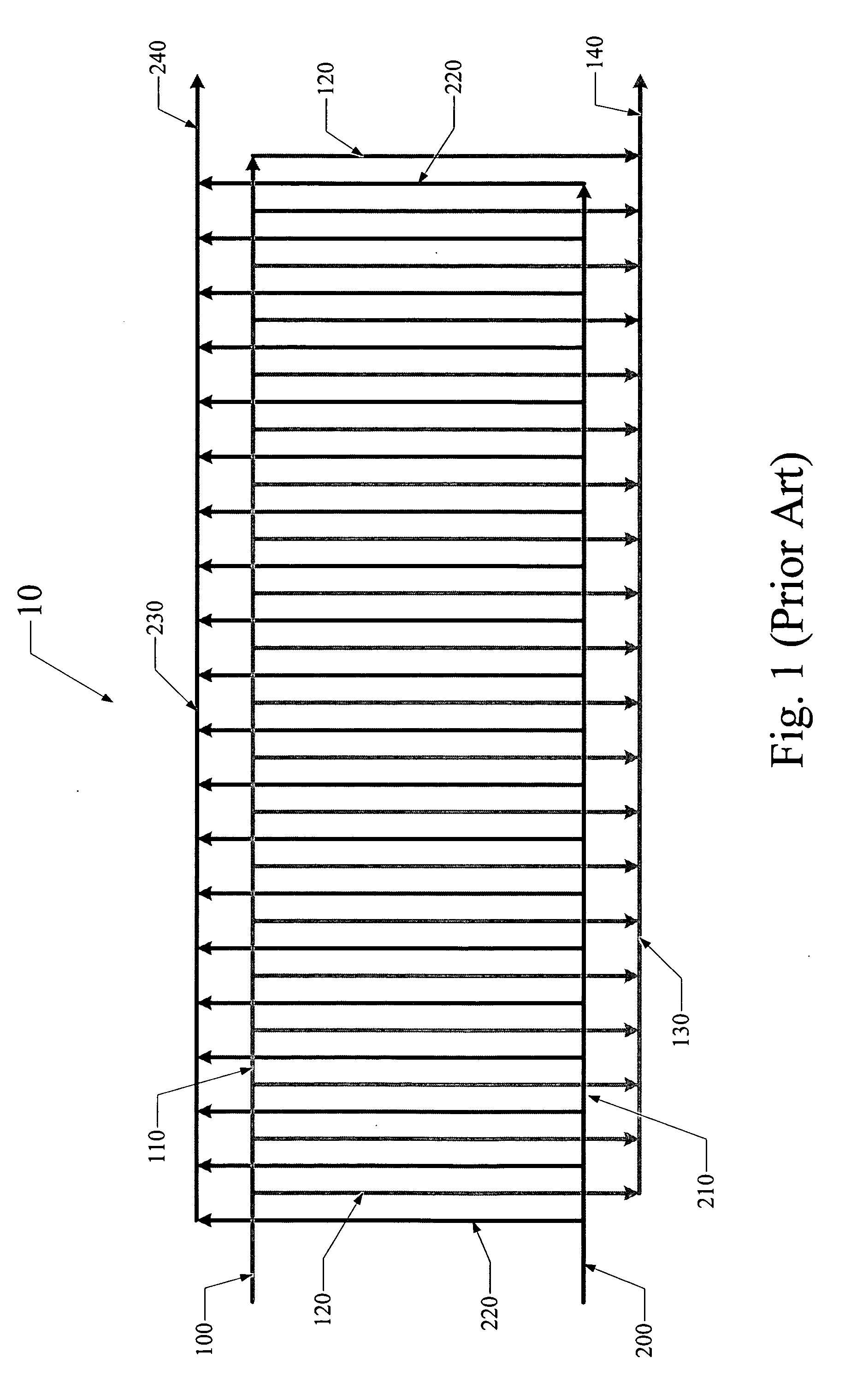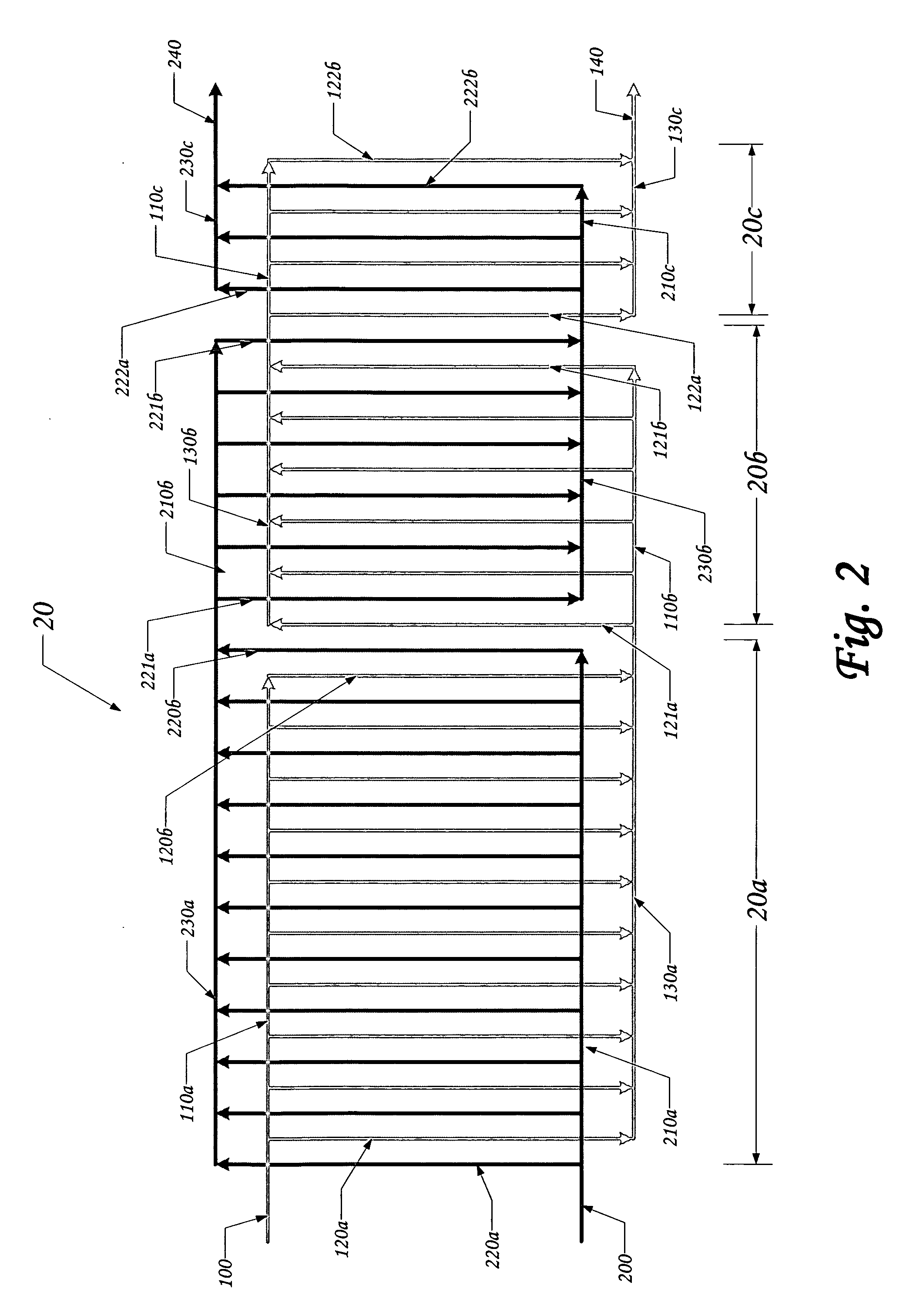Fuel cell stack with multiple groups of cells and flow passes
a fuel cell and flow pass technology, applied in the direction of fuel cells, heat exhanger conduits, lighting and heating apparatus, etc., can solve the problems of increasing the cost of the stack, so as to improve the capability and performance of water removal, improve the uniformity of reactant gas distribution, and improve the effect of water removal ability
- Summary
- Abstract
- Description
- Claims
- Application Information
AI Technical Summary
Benefits of technology
Problems solved by technology
Method used
Image
Examples
example 1
[0048] In this example, O2 utilization is increased from 33% to 67%.
Total number of cells: 100
Overall stoichiometry of reactant O2: 1.5
[0049] Design local stoichiometry of reactant O2: 3.0
TABLE 3Local stoichiometry of reactantO2 after cell number adjustmentCell Group 1503Cell Group 2303.3Cell Group 3203.5
example 2
[0050] In this example, O2 utilization is increased from 25% to 67%.
Total number of cells: 100
Overall stoichiometry of reactant O2: 1.5
[0051] Design local stoichiometry of reactant O2: 4.0
TABLE 4Local stoichiometry of reactantO2 after cell number adjustmentCell Group 1383.9Cell Group 2284.0Cell Group 3204.2Cell Group 4144.6
example 3
[0052] In this example, 02 utilization is increased from 25% to 80%.
Total number of cells: 100
Overall stoichiometry of reactant O2: 1.25
[0053] Design local stoichiometry of reactant O2: 4.0
TABLE 5Local stoichiometry of reactantO2 after cell number adjustmentCell Group 1314.0Cell Group 2243.9Cell Group 3183.9Cell Group 4143.7
PUM
| Property | Measurement | Unit |
|---|---|---|
| temperature | aaaaa | aaaaa |
| physical state | aaaaa | aaaaa |
| resistance | aaaaa | aaaaa |
Abstract
Description
Claims
Application Information
 Login to View More
Login to View More - R&D
- Intellectual Property
- Life Sciences
- Materials
- Tech Scout
- Unparalleled Data Quality
- Higher Quality Content
- 60% Fewer Hallucinations
Browse by: Latest US Patents, China's latest patents, Technical Efficacy Thesaurus, Application Domain, Technology Topic, Popular Technical Reports.
© 2025 PatSnap. All rights reserved.Legal|Privacy policy|Modern Slavery Act Transparency Statement|Sitemap|About US| Contact US: help@patsnap.com



